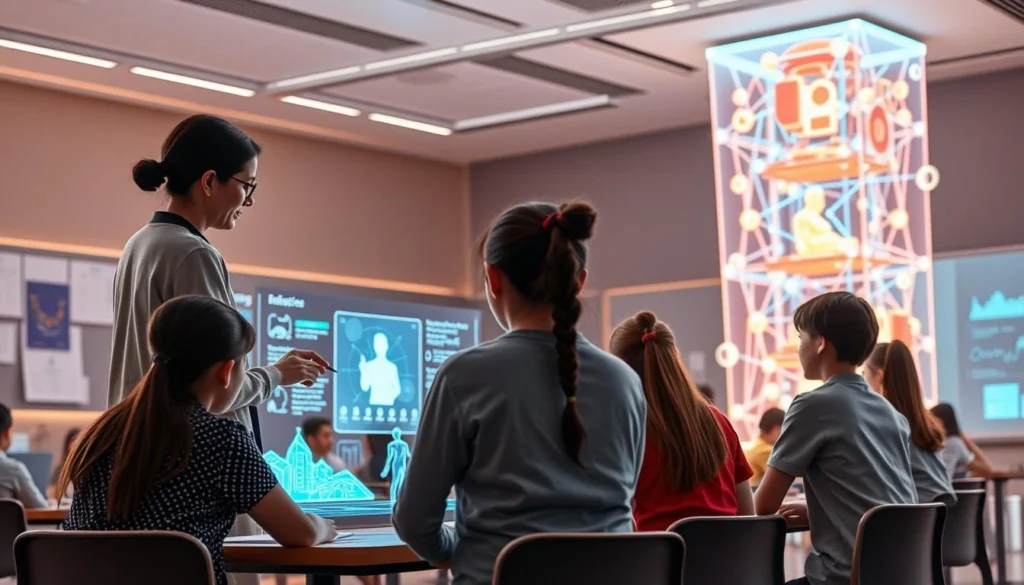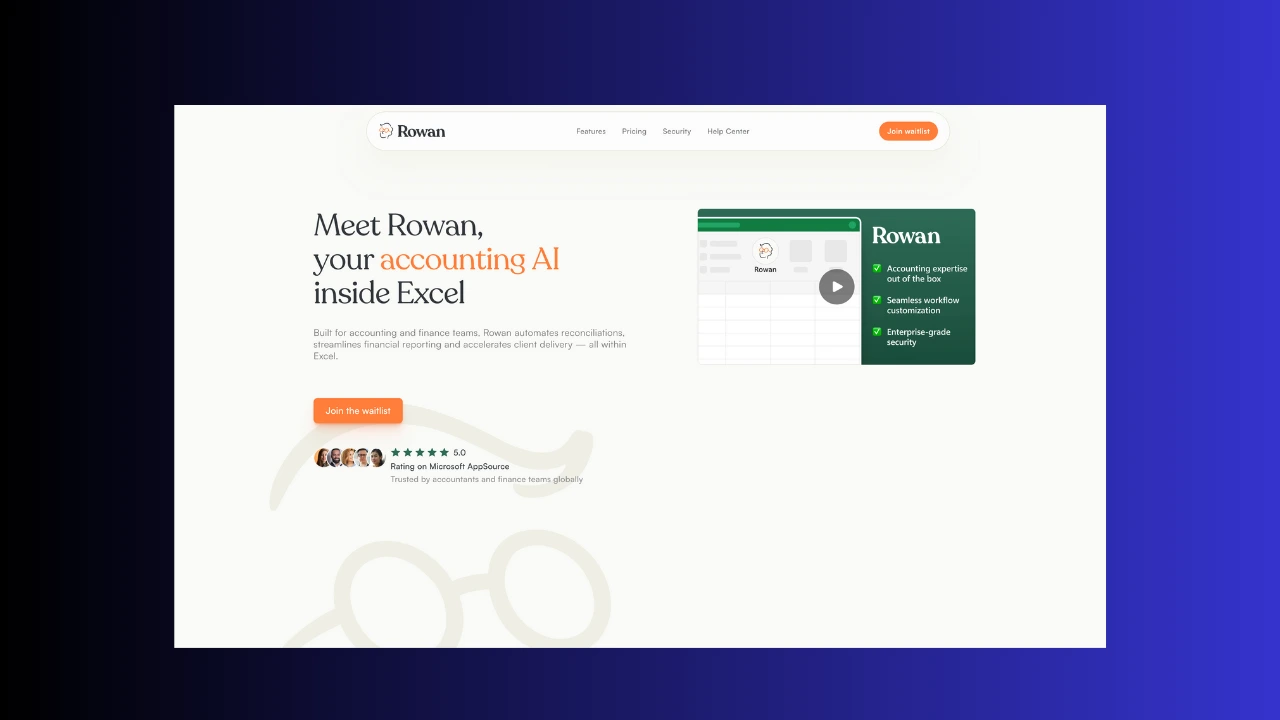“Learn how teachers in 2025 are using AI tools to reduce workload, personalize lessons, and boost student engagement—smarter teaching starts here.”
As an educator, I’ve seen how artificial intelligence in education changes things. Over the last five years, I’ve found ways to use AI in my teaching. It wasn’t just a trend back then.
I started by asking: How can I use technology to make learning more fun and personal? I found out that harnessing the power of AI helps a lot. It makes tasks easier, keeps students interested, and offers learning plans just for them.
In this article, we’ll look at how AI for teachers can change teaching. It makes teaching more efficient and effective.
Key Takeaways
- Discover how AI tools can save time for educators.
- Learn to personalize lessons using artificial intelligence.
- Boost student engagement with AI-driven approaches.
- Explore the benefits of AI in education for both teachers and students.
- Understand how to integrate AI into your teaching practice.
Introduction
AI is becoming a key tool for teachers in today’s complex education world. We’re not just teaching content anymore. We’re also mentors, helping students learn, and learning together with them.
Our roles as educators have changed a lot over the years. Technology, like AI, can make us a bit hesitant. But, by using machine learning for educators, we can make learning more effective and tailored to each student.
Teachers are now using teacher AI tools to make their work easier, tailor lessons, and get students more involved. This change isn’t about replacing teachers. It’s about helping them do their job better.
By embracing AI, educators can keep up with the fast-changing world of education. It’s about being open to new tech and finding ways to improve our teaching.
Why AI Is Becoming Essential for Educators
AI is changing how teachers work. They used to spend a lot of time on tasks like emails and grading. This made it hard for them to focus on teaching.
AI helps by doing these tasks for them. This lets teachers spend more time on what really matters. They can now focus on teaching and helping students in a more personal way.

AI brings many benefits to education. It helps teachers by reducing their workload. It also lets them tailor their teaching to each student’s needs.
This makes learning better and more engaging for students. It leads to better results and happier students.
| Task | Traditional Method | AI-Enhanced Method |
|---|---|---|
| Grading | Manual grading by teachers | Automated grading using AI tools |
| Lesson Planning | Teachers create plans manually | AI-assisted creation of personalized lesson plans |
| Classroom Management | Teachers manage classrooms manually | AI-powered tools assist in classroom management |
AI’s role in education will only grow. By using smart teaching solutions, teachers can save time and improve education. This makes AI a key part of teaching today.
4 Time-Saving Ways Teachers Use AI in 2025
In 2025, teachers are finding new ways to use AI to save time and improve learning. AI is changing how they work, making lessons more personal and engaging. This helps them manage their time better and focus on what’s important.
AI in education is more than just tech. It’s about making teaching more efficient and effective. By handling routine tasks, AI lets teachers concentrate on their students.
1. Automating Lesson Planning
AI is a big help in planning lessons. It can create detailed plans quickly, saving teachers a lot of time. For example, virtual assistants for teachers can make plans that fit each student’s needs.
Studies show teachers who use AI for planning work less. They have more time for interacting with students and giving feedback.
“AI has revolutionized the way I plan my lessons. I can now focus more on teaching and less on preparation.”
A teacher’s feedback on using AI for lesson planning
2. Creating Personalized Learning Paths
AI helps teachers make personalized learning paths for students. It uses data to suggest learning materials and activities that fit each student’s style and needs.
This approach makes learning more engaging and effective. Teachers can use AI to find where students need extra help, making their teaching better.
3. Grading and Feedback Automation
Grading and giving feedback take up a lot of time. AI can handle grading for multiple-choice questions and offer feedback on assignments. This lets teachers focus on more important teaching tasks.
| Task | Time Saved with AI |
|---|---|
| Grading | Up to 50% |
| Lesson Planning | Up to 30% |
| Feedback | Up to 20% |
4. AI-Powered Classroom Management Tools
AI-powered classroom management tools are getting popular. They help teachers manage the classroom, track student behavior, and keep the learning environment productive.
AI helps teachers create a more organized classroom. This improves learning and reduces stress for teachers.
In conclusion, AI is changing teaching by solving old problems. By using AI, teachers can save time and improve education quality.
Top AI Tools Teachers Are Using Right Now
In 2025, teachers are using AI tools more than ever. These tools help them teach better. The market offers many new solutions for educators.

Many AI tools are changing the classroom. They make learning better and teaching easier.
1. Curipod – Interactive AI Lesson Generator
Curipod is a tool that helps teachers make fun lesson plans. It uses AI to create interactive content. This keeps students interested.
2. Diffit – AI-Powered Reading and Lesson Support
Diffit is a tool that supports reading and lessons. It helps teachers adjust their materials for different students.
3. ChatGPT – Instant Idea Generator & Explainer
ChatGPT is great for quick ideas and explanations. Teachers use it for lesson plans and to explain tough topics.
4. Canva for Education – Design Help with AI
Canva for Education uses AI to help teachers design educational materials. It makes designing easy, so teachers can focus on teaching.
These AI tools are changing teaching. They help teachers save time, make lessons personal, and keep students engaged. By using these tools, teachers can make learning more effective and fun.
Benefits of AI in the Classroom
AI helps teachers give personalized learning experiences to students. It uses analytics to understand how students learn and perform. This lets teachers adjust their teaching to fit each student’s needs.
AI makes learning fun and interactive, which boosts student engagement. For example, AI can change the difficulty of lessons based on how well a student is doing. This way, every student gets the right challenge.
AI also makes teachers more productive by doing tasks like grading and planning. This frees up teachers to focus on teaching and helping students. AI can quickly spot where students need extra help, so teachers can act fast.
AI helps create customized learning paths for each student. It looks at student data to suggest the best learning materials and activities. This keeps students on track and helps them reach their goals.
- Enhanced student engagement through interactive learning experiences
- Improved learning outcomes due to personalized instruction
- Increased teacher productivity through automation of routine tasks
In summary, AI brings many benefits to the classroom. It offers personalized learning, boosts student engagement, and makes teaching more efficient. As teachers use AI more, they can give better education to all students.
Challenges & Considerations When Using AI in Education
Using AI in education comes with its own set of challenges. It’s important to understand these to make it work well.
One big challenge is keeping academic integrity intact. AI tools can be used to do assignments or exams, which goes against school rules. This is why AI plagiarism detection tools are now a must to check student work.
There’s also the problem of bias in AI algorithms. If the data used to train AI is biased, it can unfairly affect some students. Teachers need to watch out for this and make sure AI content is fair and accurate.
Another issue is data privacy. AI tools need a lot of student data, which must be kept safe. It’s up to teachers and school leaders to make sure this data is protected.
To tackle these problems, educators can do a few things. They should clearly explain how AI is used in class to students and parents. They should also keep an eye on AI-generated content for any biases or mistakes. Lastly, staying up to datewith AI in education helps teachers deal with new issues.
By knowing these challenges and acting on them, teachers can use AI to improve learning. This way, they can keep education fair and honest for everyone.
Best Practices for Teachers Using AI Ethically
AI is changing education fast. Teachers must think about the right way to use these tools.
Teachers should use AI wisely. They should keep data privacy, transparency, and fairness in mind. They should not use personal info of students or themselves.
- Be open with students about AI use.
- Check AI content for accuracy.
- AI should help teaching, not replace it.
- Update AI systems to avoid bias.
By following these tips, teachers can make learning better with AI. As we look to 2025, AI will keep changing education. It’s up to teachers to use AI well.
Teachers are using AI in many ways. They make learning plans for each student, grade work automatically, and manage classrooms better. Using AI right can make teaching easier, help students more, and make learning fun.
Conclusion: Embracing AI for Smarter Teaching in 2025
As we enter 2025, artificial intelligence is changing education a lot. Teachers use AI to make their work easier, tailor lessons, and get students more involved. This way, they can make learning smarter and more effective for everyone.
Some big advantages of AI in schools are:
- It helps teachers by doing routine tasks, so they can teach more.
- It makes learning plans that fit each student’s needs better.
- It gives feedback and checks on how students are doing right away.
By using AI in their teaching, teachers can do better and have an easier time. As we keep looking into AI’s role in education, it’s clear that smart teaching solutions are the future.

We need to keep sharing ideas and talking about AI’s good and right use in education. This way, we make sure AI helps all students learn better.
FAQ
Is AI safe to use in schools?
Yes, AI can be safe in schools if used right. It’s important to focus on keeping data private and secure. Teachers should pick AI tools that follow the rules.
What AI tools are best for teachers in 2025?
Teachers might like Curipod, an AI tool for making lessons interactive. Diffit helps with reading and lessons using AI. Canva for Education offers design help with AI. The best tool varies based on what teachers need.
Can AI fully replace teachers?
No, AI can’t replace teachers. AI helps with some tasks and makes teaching better. But, it can’t match the care and understanding teachers provide. AI is meant to help, not take over.
How can AI personalize student learning?
AI personalizes learning by looking at each student’s data. It creates learning plans just for them. This way, students learn at their own pace and in their own way, making learning more fun and effective.
What are some other ways educators use AI?
Teachers use AI in many ways. It helps with planning lessons, grading, and managing classrooms. AI also assists with virtual help, smart teaching, and learning for educators.
How can teachers ensure they’re using AI ethically?
Teachers can use AI ethically by being open about it. They should protect student data and deal with AI biases. By doing this, they keep teaching honest and use AI’s benefits.





